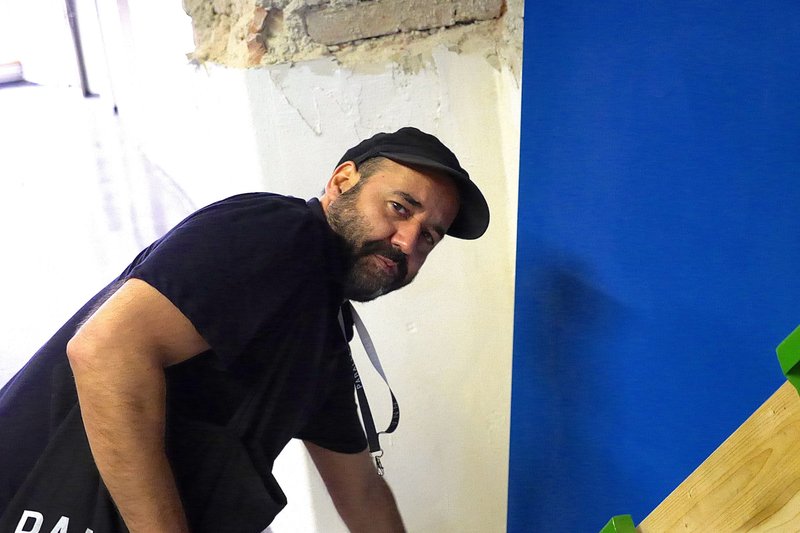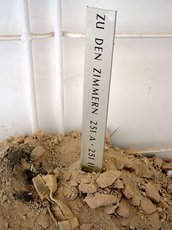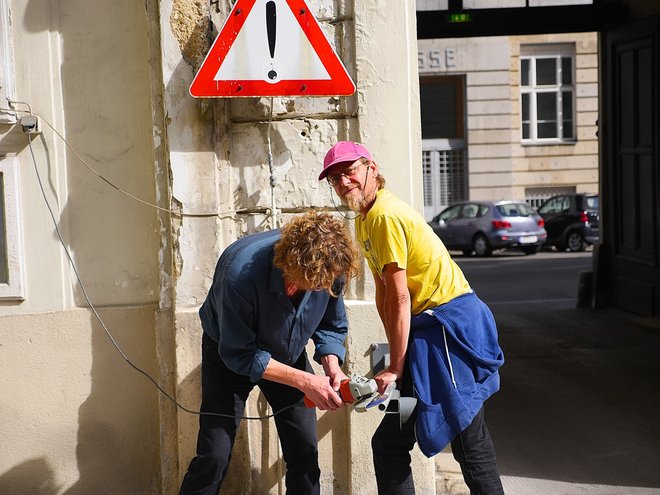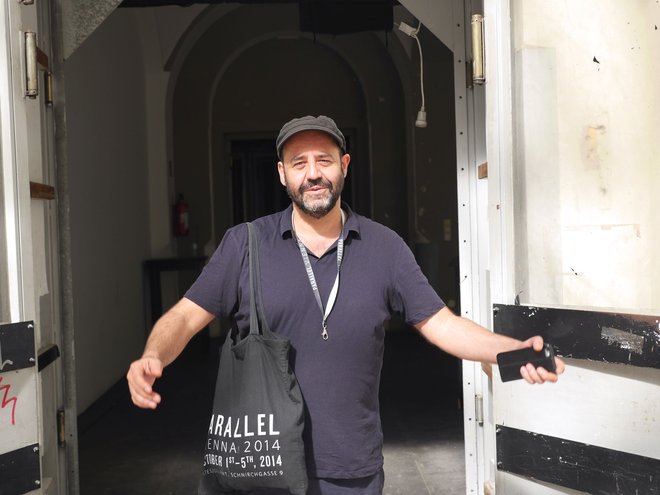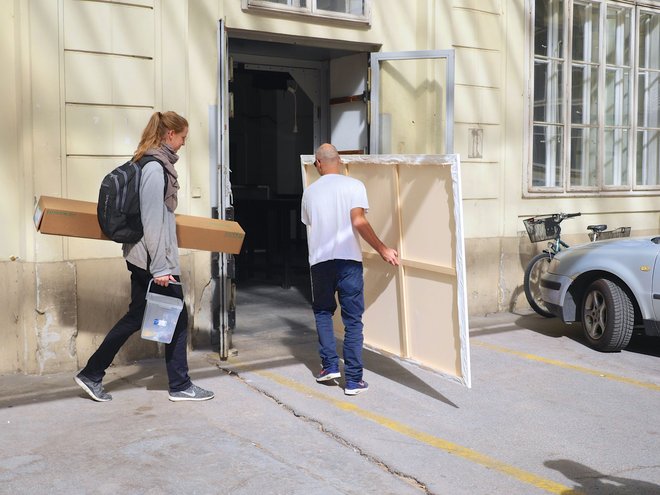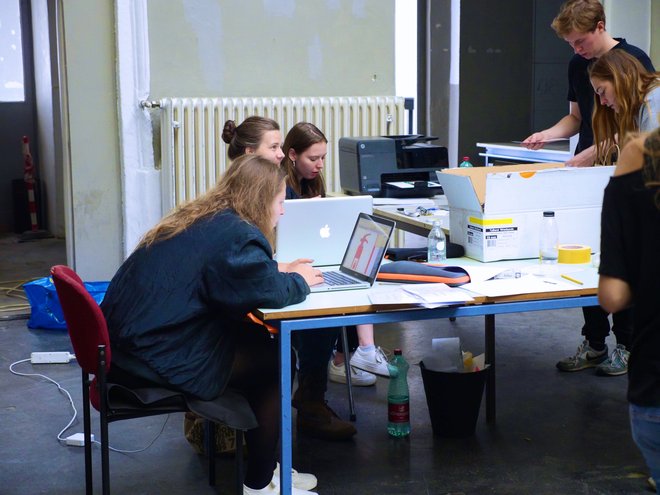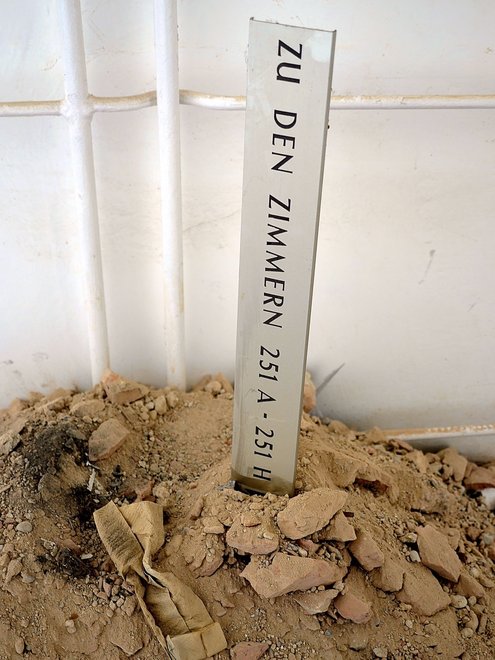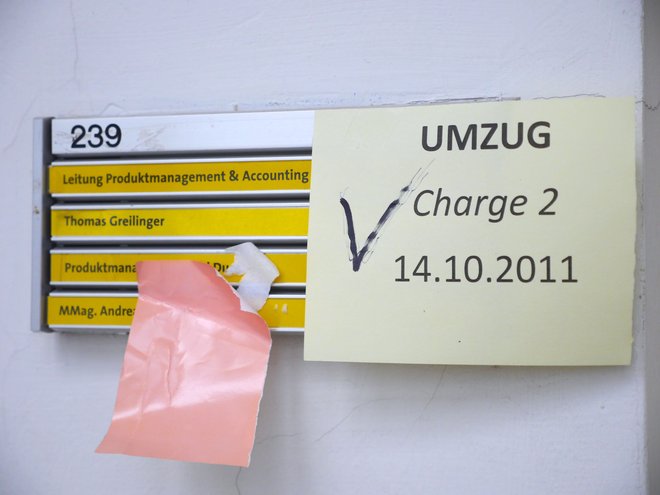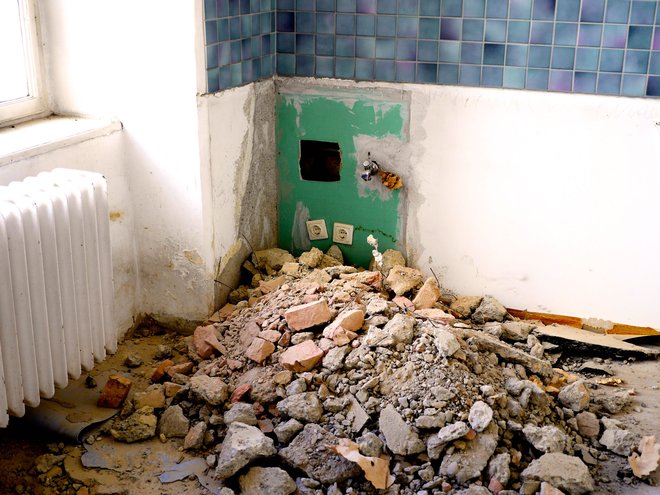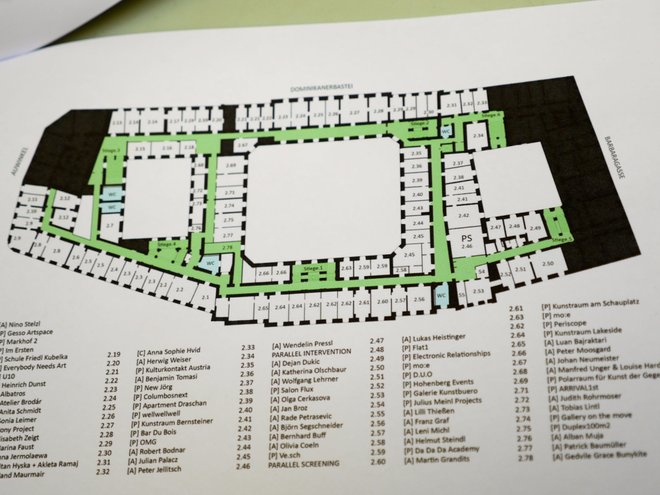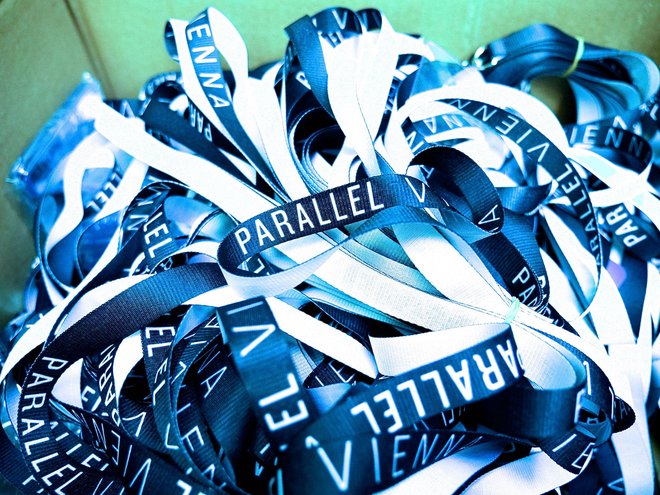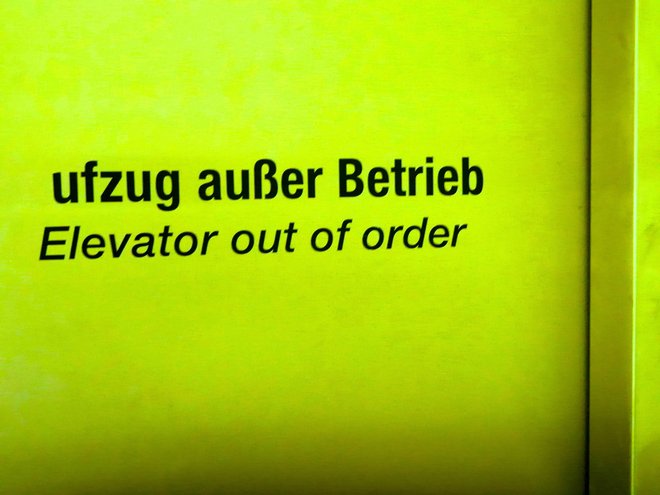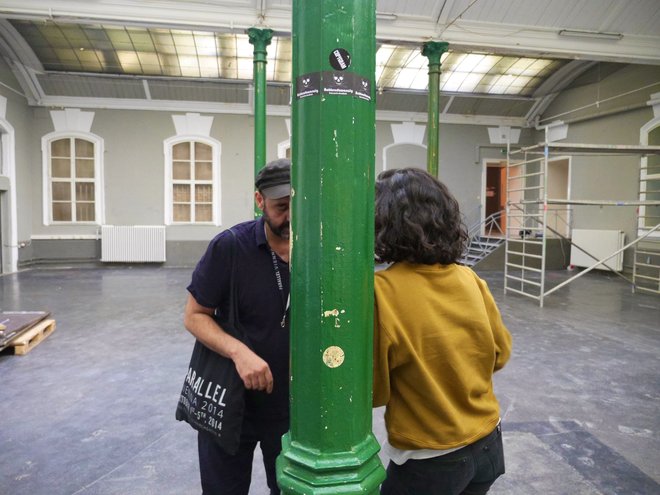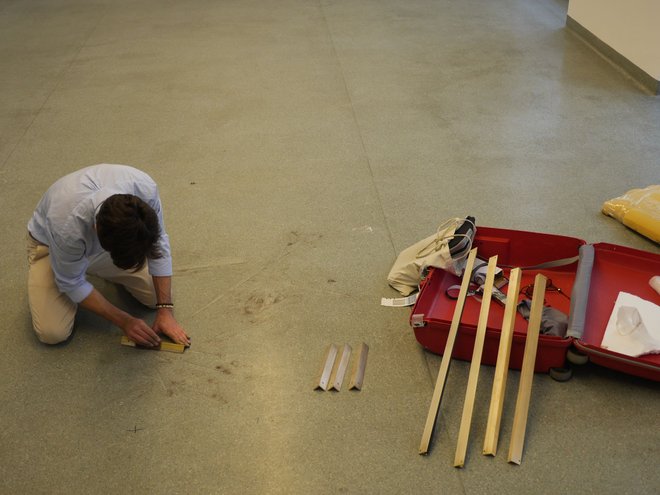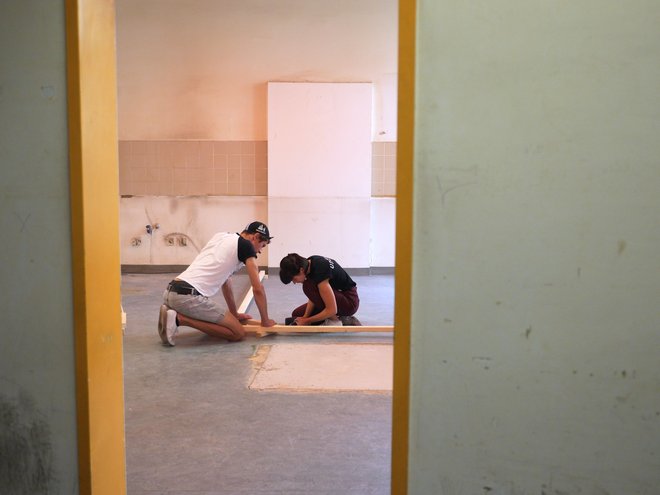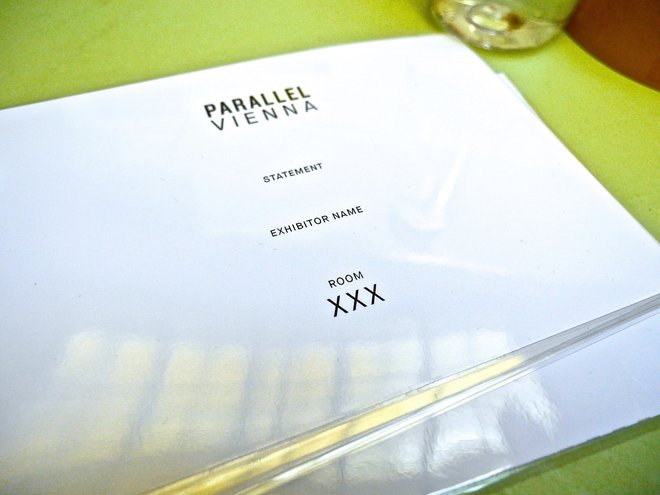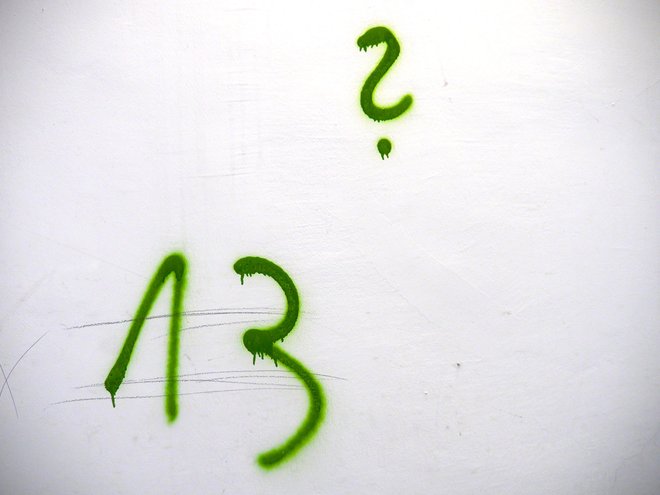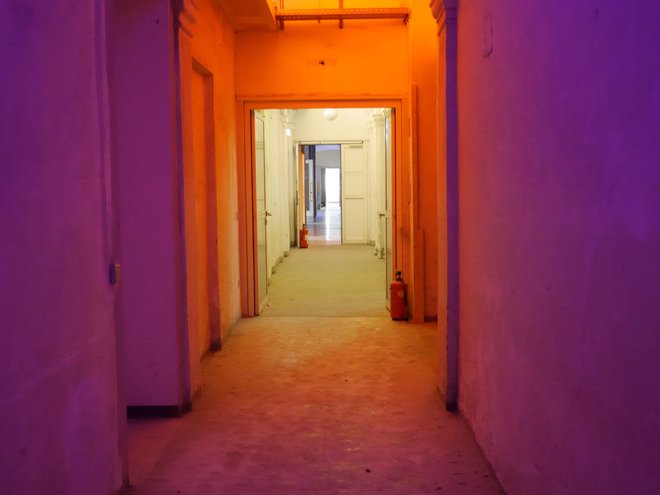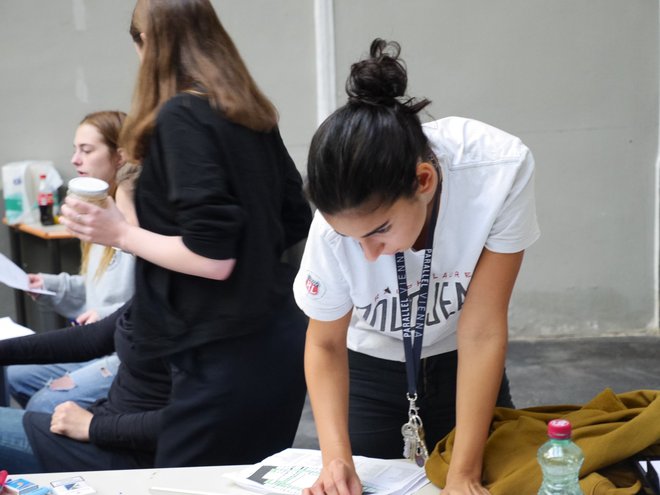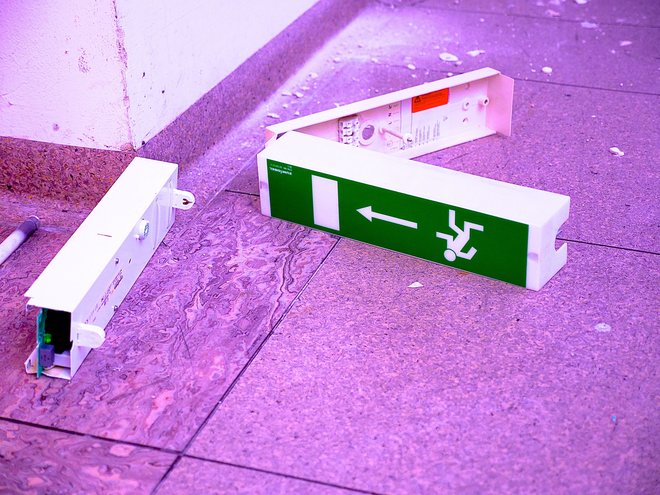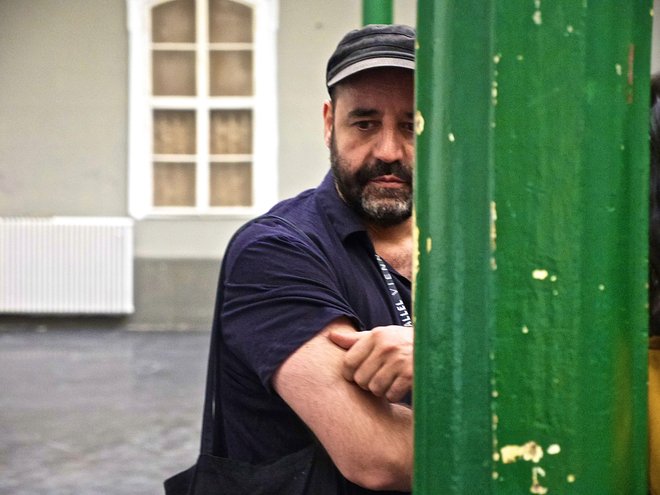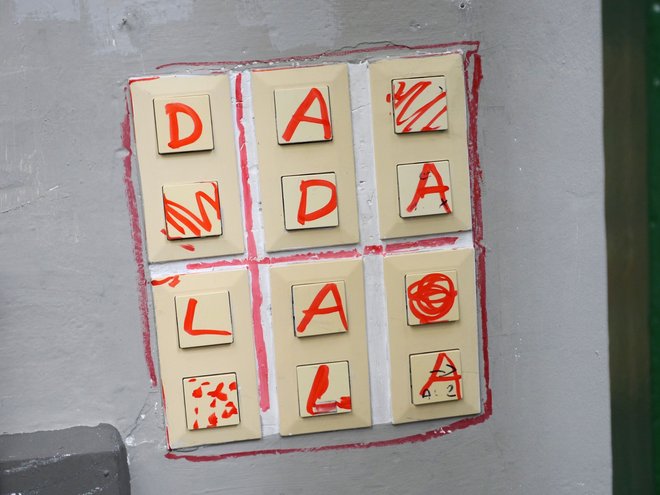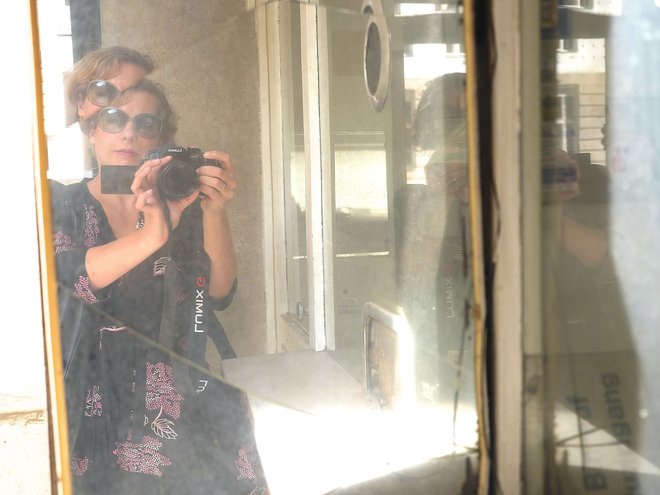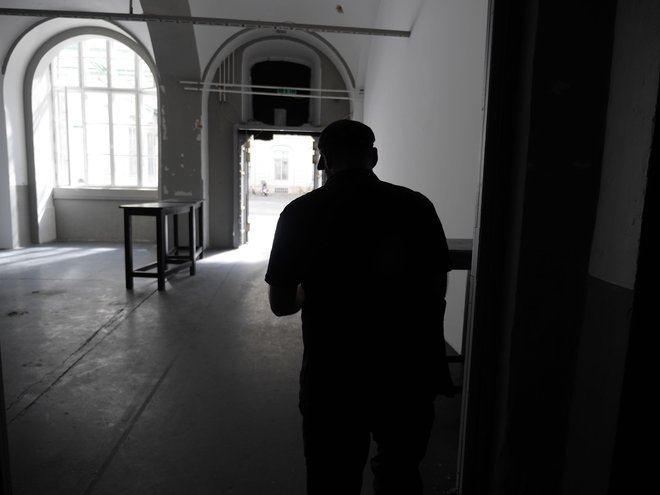Alternative Art Fair In Vienna
Dark rings under the eyes, a cigarette in one hand, mobile phone in the other. Stefan Bidner, artistic director and co-founder of Parallel Vienna, welcomes me at the abandoned former post office building in Vienna’s 1st district. The show opens in the evening. And there’s still a whole lot to be done.
Antje Mayer-Salvi: The old post office building is a wonderful setting, and it’s huge – as if the clerks had only just left! I heard Parallel Vienna is so successful that you could already sell it?
Stefan Bidner (laughs): That’s a rumor. The truth is that I founded a company this year together with Kaveh Ahi and Daniel Haider (editor’s note: co-founder & managing partner of Parallel Vienna). We started three years ago from scratch. There was simply a lack of platforms for young artists in the city, which we wanted to counter with something independent. It was just in the air back then! The Academy of Fine Arts and the University of Applied Arts continuously produce new talent, but there are hardly any places in Vienna that would showcase them.
Are things progressing at Parallel?
Definitely. The old post building measures 20,000 m2; this time we are using 7000 m2 (!) on three levels. Really big. Twenty galleries are participating. Also established ones like Krinzinger Projekte, Gabriele Senn, Christine König, and Emanuel Layr, which makes me really happy. They can present their younger positions with us. Furthermore, there are almost forty off-spaces as well as curators’ and artists’ statements. More than 400 artists and 15 international curators are on board. Our focus is indeed Austria and Vienna, but not only.
"Parallel Vienna is something between festival and museum show. That’s the trend"
In the next weeks a whopping three art fairs are taking place in Vienna, the viennacontemporary (September 24–27), Parallel Vienna (September 23–27), and the Viennafair (October 8–11). In November there is also the Vienna Art Week and in March the art austria at Leopold Museum. There must be a nest of art collectors here who I don’t know anything about yet!
Unfortunately not, but Vienna can obviously handle a number of such art events. We have to wait and see who stays. We don’t see ourselves as competitors with events such as viennacontemporary, rather as a complement. The name “Parallel” says it all. However, we don’t directly work together with them, we only cooperate – this year for the Closing Party at Volksgarten Club on September 26, 2015.
Another rumor: There are more sales at Parallel Vienna than at the other art fairs?
Our attendance figures are very high. After all, Parallel has charm. But in terms of the budget and size of the team, you can’t compare it with the others. We have good sales? Why has no one told me anything about it? (laughs) The art market is traditionally tight-lipped about this. It would be great, but it’s definitely not the case. We are still more an information than a sales platform. Much needed, since there are hardly any young galleries in Vienna. Most of the established Viennese gallerists are well into their fifties. But perhaps it is also because the model of the gallery in general has been outdated for a long time.
How does the gallery of the future look like?
The conservative gallery system is becoming obsolete. In the future there will definitely be more of these pop-up things like we are doing, along with the DIY and co-working models. As artistic director I ensure of the quality with my well-functioning network and close contacts to the artists. This is still essential. The gallerists also support us a lot with their know-how. I prefer quality over quantity. Parallel Vienna is a kind of curatorial mega-exhibition, something between festival and museum show. That’s the trend.
"Also the newcomers between 20 and 30, who have already earned a bit, they can afford something here"
How big is your core team?
Just seven people.
Hats off! That’s effective. And who is paying for all of that?
Everyone takes care of financing and organizing their own contribution. Off-spaces and galleries pay a symbolic amount; the artists can naturally participate for free. But this doesn’t nearly cover our costs. The rest comes from sponsors, but it could be better. In the end, it just works out with a certain degree of solidarity.
A magical place, this old post office building. Stefan Bidner guides me down endless hallways, one room follows the next, halls, pergolas, the old door plates are still there, the floor of some rooms is ripped open. We sit in a small empty room and smoke a cigarette. The interview must go on quickly, Stefan’s mobile phone is ringing and vibrating incessantly.
What’s happening next with Parallel?
I see this as a start-up enterprise. We aim to establish ourselves. We are parasitic. That’s the thrill. We could also do Parallel in other cities, not in this scale, of course. I can totally imagine an Art Parallel Basel. We could check some abandoned property...
Does the current refugee drama play a role at Parallel Vienna?
Tens of thousands of people are streaming through our country, and no one is indifferent about this. We are experiencing a historical moment; such an art event seems trivial in comparison. What can we contribute? We are making a charity auction on the last day of Parallel. Half of the revenue will be donated to a refugee project. That’s a small contribution. For sure some artists will do something with the theme, too.
You also have a VIP zone. Even an alternative event like Parallel Vienna obviously can’t avoid these old school structures!
We also want to offer a service. We don’t take this deadly serious. Let’s say, it’s a place for the “shady deals” (laughs). Many artists say they are not interested in collectors and selling. But at the end of the day they all have to live from something, don’t they?
Is the Viennese art scene really interesting?
It has done quite a lot. Everything has become exceptionally fast with social media. Before artists had to go door to door through all the art associations and galleries. Now you can pave your way within a year. The most renowned examples in Vienna are the artists Alexander Ruthner and Chris Rosa. The right people and the right time. But they didn’t make it via Vienna rather via London and Los Angeles. That’s great.
Is Vienna good in terms of art?
Everything is quite ponderous. We are a country with eight million inhabitants and not a multinational state that justifies such cumbersome museum structures. The museum houses are too big, too expensive, and inflated out of proportion. The directors don’t really have any new ideas and earn executive board salaries. We really need a major reform!
Collectors come to Parallel?
We have a very good reputation, and yes, they come because they can discover new things. It is a nice mix of “established” and “emerging”, what we offer. Also the newcomers in the generation between 20 and 30, who have already earned a bit, they can afford something here. Come one, come all!

